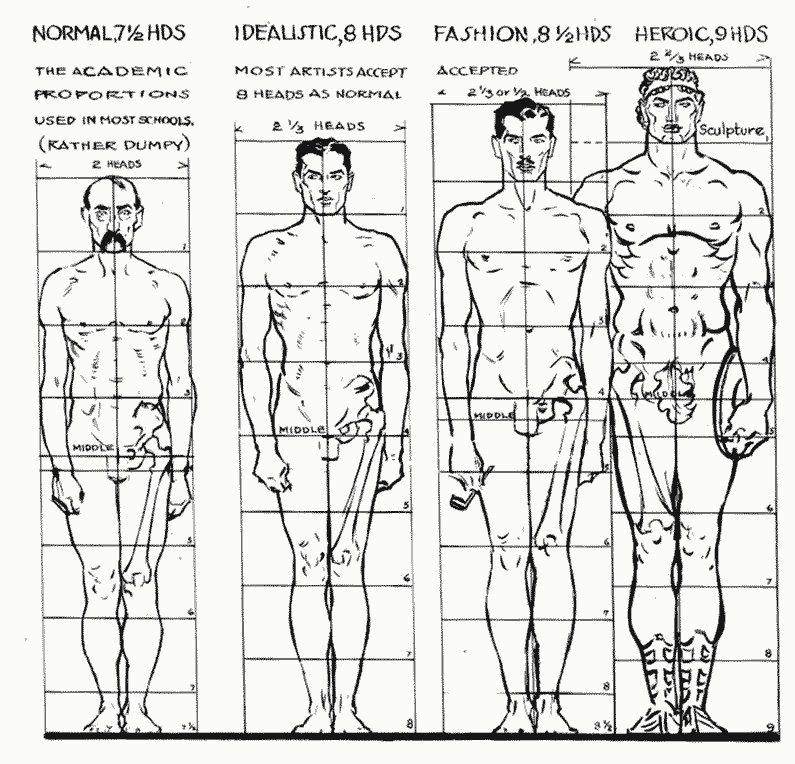Getting proportions right with drawing humans from the imagination can be tricky. People over the years since at least the Ancient Greeks have been creating methodologies to assist in this. You have probably seen the Vitruvian Man by Leonardo Da Vinci (below). This study found that the ideal form has four arms and an accompanying four legs, and is otherwise occasionally referred to as the Spider Man.

Watch this video by Proko on Youtube to learn about a few of methodologies for establishing correct proportions in your drawings.
The method created by Andrew Loomis is a simple way to get figures looking correct. The thing to remember is that the figure is divided into head heights. The torso is roughly divided into three heads. That is, one head from chin to nipple line. One from nipple line to belly button. The last head height from belly button to perineum, the area between anus and genitals. It’s not an exact science but it helps to quickly check if your character looks wonky.

I’ve taken this method and applied it to some previous drawings. This one on the left is seven and a half heads tall. I’ve removed her skin for clarity. The clothed model, Black Dove from Entwined: A Recurrent Romance, is eight heads tall. Notice the extra length comes from the legs.

I’ve noticed that in general the legs are where the majority of difference lies in people’s heights, on average. Look around next time you’re on the bus or train. Everyone’s heads are roughly the same height, regardless of actual height. Again, this is not an exact science, but it is common enough to be useful when drawing characters without reference.